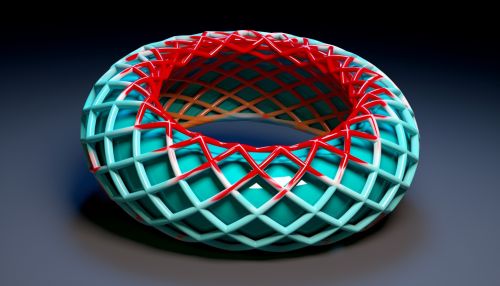Mapping Class Groups
Introduction
In the field of topology, a branch of mathematics, the mapping class group is a topic of significant interest. It is a group that encapsulates the symmetries of a topological space, particularly a surface or a 3-manifold, that can be realized by homeomorphisms. The study of these groups is a major part of geometric topology, and they have also found applications in several other areas of mathematics.


Definition and Basic Properties
Formally, the mapping class group of a topological space X is defined as the group of all homeomorphisms from X to itself, modulo isotopy. This group is usually denoted as Mod(X). The elements of Mod(X) are equivalence classes of homeomorphisms, where two homeomorphisms are considered equivalent if they are isotopic.
An important property of mapping class groups is that they are always finitely presented. This means that there is a finite set of generators and relations for the group. This property is crucial for many of the applications of mapping class groups in topology and algebra.
Generators and Relations
The standard way to construct a finite presentation for the mapping class group of a surface is to use Dehn twists. A Dehn twist is a homeomorphism of a surface that rotates a simple closed curve around itself by 360 degrees. The Dehn twists generate the mapping class group of any surface, and their relations can be described by the so-called lantern, chain, and braid relations.
The lantern relation is a relation among Dehn twists around four simple closed curves that meet at a single point. The chain relation is a relation among Dehn twists around three simple closed curves that intersect pairwise. The braid relation is a relation among Dehn twists around three simple closed curves that do not intersect.
Mapping Class Groups of Surfaces
The study of mapping class groups of surfaces is a central topic in geometric topology. The mapping class group of a surface is closely related to the fundamental group of the surface, and many properties of the surface can be deduced from the structure of its mapping class group.
For example, the mapping class group of the torus is isomorphic to the modular group, which is a well-studied group in number theory. This connection between topology and number theory has led to many interesting results and conjectures.
Mapping Class Groups of 3-Manifolds
The study of mapping class groups of 3-manifolds is a more recent development in topology. These groups are much more complicated than their counterparts for surfaces, and many basic questions about them remain open.
One of the main tools for studying these groups is the Heegaard splitting of a 3-manifold. A Heegaard splitting is a decomposition of a 3-manifold into two handlebodies, and it gives rise to a presentation of the mapping class group of the 3-manifold.
Applications
Mapping class groups have found applications in several areas of mathematics. In topology, they are used to study the structure of surfaces and 3-manifolds. In algebra, they are used to construct interesting examples of groups. In geometric group theory, they are used to study the large-scale geometry of groups.
